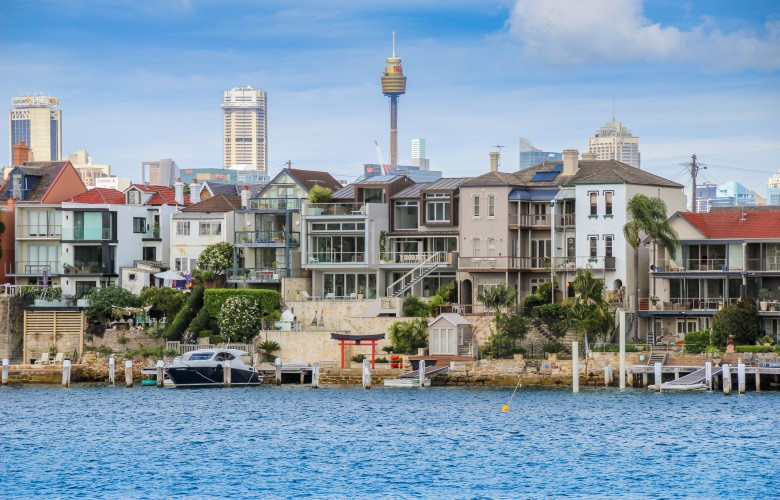Sydney ranks 6th out of 10 cities globally for luxury residential rental growth - Knight Frank
Contact
Sydney ranks 6th out of 10 cities globally for luxury residential rental growth - Knight Frank
Sydney saw the sixth highest annual growth in luxury residential rents in 2022 out of 10 ranked global cities, according to the latest research from Knight Frank.
Sydney saw the sixth highest annual growth in luxury residential rents in 2022 out of 10 ranked global cities, according to the latest research from Knight Frank.
Knight Frank’s Prime Global Rental Index (PGRI) Q4 2022, which tracks the movement in luxury residential rents across 10 global cities worldwide, found Sydney rents for prime property rose by 6.7 per cent over 2022 and 3.7 per cent over the last quarter of 2022.
Prime property is the most desirable and expensive property in a given location, generally defined as the top five per cent of each market by value.
The PGRI increased 10.3 per cent in the year to December 2022, down from a peak of 11.8 per cent in March 2022.
Singapore saw the strongest rise in prime rents year-on-year, with growth of 28.2 per cent, followed by New York (18.6 per cent), London (17.8 per cent), Toronto (15 per cent) and Tokyo (8.4 per cent).
Sydney’s annual growth beat Auckland and Geneva (both 3.8 per cent), Monaco (2.7 per cent) and Hong Kong, which saw a fall in luxury residential rents of 6.4 per cent.
Over the final quarter of 2022 Sydney had the fourth highest growth in prime residential rents with a 3.7 per cent rise, coming in behind Singapore (7.3 per cent), Auckland (5.4 per cent) and Tokyo (3.9 per cent).
Knight Frank Head of Residential Research Michelle Ciesielski said prime rents had remained robust across many global cities and were still averaging double-digit annual growth, despite the overall rate of annual growth starting to slow.
“Sydney saw strong growth over the last quarter of 2022, in line with the rental growth occurring in the wider luxury residential market, and with a shortage of prime homes to rent in the city, prime rental rates are expected to continue strengthening,” she said.
“Total residential rental vacancies in Sydney have now fallen to a low of 1.4 per cent in February 2023, not seen since November 2011, according to Real Estate Institute of New South Wales figures.
“The low vacancy of rental stock can be seen across both the general market and the luxury market, and will lead to further rental growth across the two, with demand simply continuing to outweigh supply in this landlord’s market, at least in the short to medium term.”
Knight Frank Head of Residential Erin van Tuil said demand for prime residential rentals in Sydney came from a mixture of corporate tenants, people looking for somewhere to live while renovating their main residence and skilled professionals who are either expats returning or migrating from interstate and abroad.
“Due to the shortage of labour in Australia, many skilled professionals are taking up promotions to senior management roles from interstate, and international workers are being encouraged to migrate here,” she said.
“We’re seeing instances of companies contributing towards a six-month rental sign-on to entice new workers until the employee finds a longer-term property to rent, or even purchase, as it’s so incredibly tight to find stock for either instance.
“Even with this incentive, there are very limited properties to view, so many new workers to the city are taking up weekly rates with city hotels and extensively using holiday home platforms like Stayz and Airbnb whilst quickly getting acquainted with different pockets of the city as they uproot every few weeks.
“We’ve seen more clients taking up co-primary living in their country or coastal home for a good part of the month and have purchased a city pad for when they’re in town, but in many instances this occasional convenience has removed a rental home from the market.
“There are also those still waiting on their house renovations to be completed and have extended their rental requirements after being delayed by severe weather events, delivery of materials and securing tradespeople.”
Ms van Tuil said many long-standing corporate rental agreements were removed from the market throughout the pandemic to save costs, as interstate and international teams couldn’t visit their Sydney office, and when they were added back into the rental pool, there was a short lull in prime rental growth throughout 2021.
“However since borders have reopened, hotels have needed to step in to fill this returning demand as there is simply not enough rental accommodation for new workers moving to the city,” she said.
“As a result we’ve seen Sydney’s prime residential rents grow 15.8 per cent above their pre-pandemic level.”





